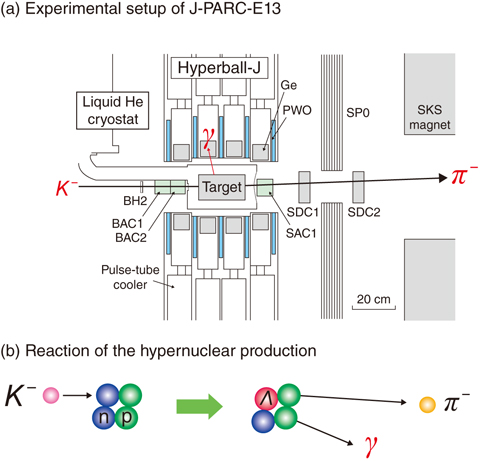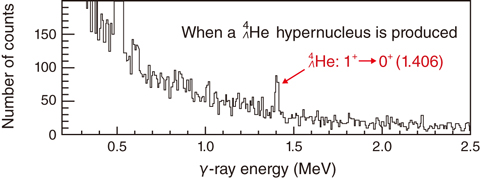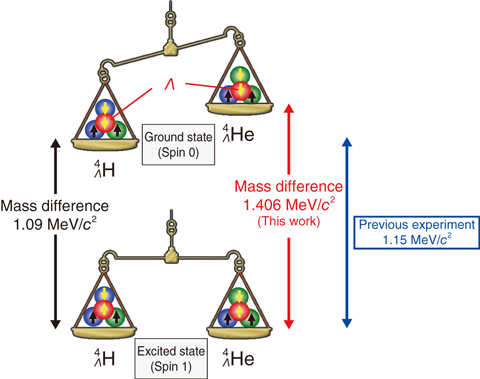
Fig.3-9 (a) Experimental setup of J-PARC-E13 and (b) reaction of the hypernuclear production

Fig.3-10 Measured γ-ray-energy spectrum

Fig.3-11 Comparison of mass between 4ΛH and 4ΛHe
Two normal nuclei for which the protons and neutrons are exchanged (known as mirror nuclei) have almost the same mass. This is known as the charge symmetry. Is this also the case for hypernuclei, which include a Λ particle known as a “strange particle?” Λ is a similar type of heavy particle (baryon) to a proton or a neutron but includes a rather heavy strange quark; this contrasts with protons and neutrons, which consist only of light up and down quarks.
A past experiment that involved measuring γ rays emitted from 4ΛHe hypernucleus showed there was almost no mass difference from its mirror nucleus 4ΛH in either the ground or excited states. Therefore, it was claimed that the charge symmetry held. However, since this experiment had poor energy resolution and signal-to-noise ratio, confirmation by an improved experiment has been required.
Therefore, we have proposed an experiment at the J-PARC Hadron Experimental Facility to measure γ rays at high-energy resolution from 4ΛHe hypernuclei that are produced by injecting the world’s highest-intensity K− beam (the total number of K− is 2.3 × 1010) onto a 4He target. This reaction is K− + 4He→4ΛHe + π− + γ, as shown in Fig.3-9(b). For this experiment, we developed a γ-ray detector which can be operated at 106 Hz K− beams as shown in Fig.3-9(a), and developed a fast-rejection technique for background γ rays with mechanical refrigerators for Ge crystals and PWO (lead tungstate) crystal-scintillation counters. Consequently, we obtained the γ-ray spectrum shown in Fig.3-10 and succeeded in improving γ-ray energy resolution 20 fold.
In this experiment, we measured a mass difference of 1.406 MeV/c2 between the excited and ground states, as shown in Fig.3-11. The precise experimental data excluded the previous experimental result of 1.15 MeV/c2. Consequently, we discovered that the mass difference from the mirror nucleus 4ΛH is significant, namely 0.32 MeV/c2, in contrast to the small mass difference of 0.06 MeV/c2 for normal nuclei. From this large mass difference, i.e., the charge-symmetry breaking, we learned that the forces between a Λ and a neutron and between a Λ and a proton differ largely depending upon the spin state (namely the excited state). This work provided important data concerning the nuclear force between baryons such as protons, neutrons, and Λs.